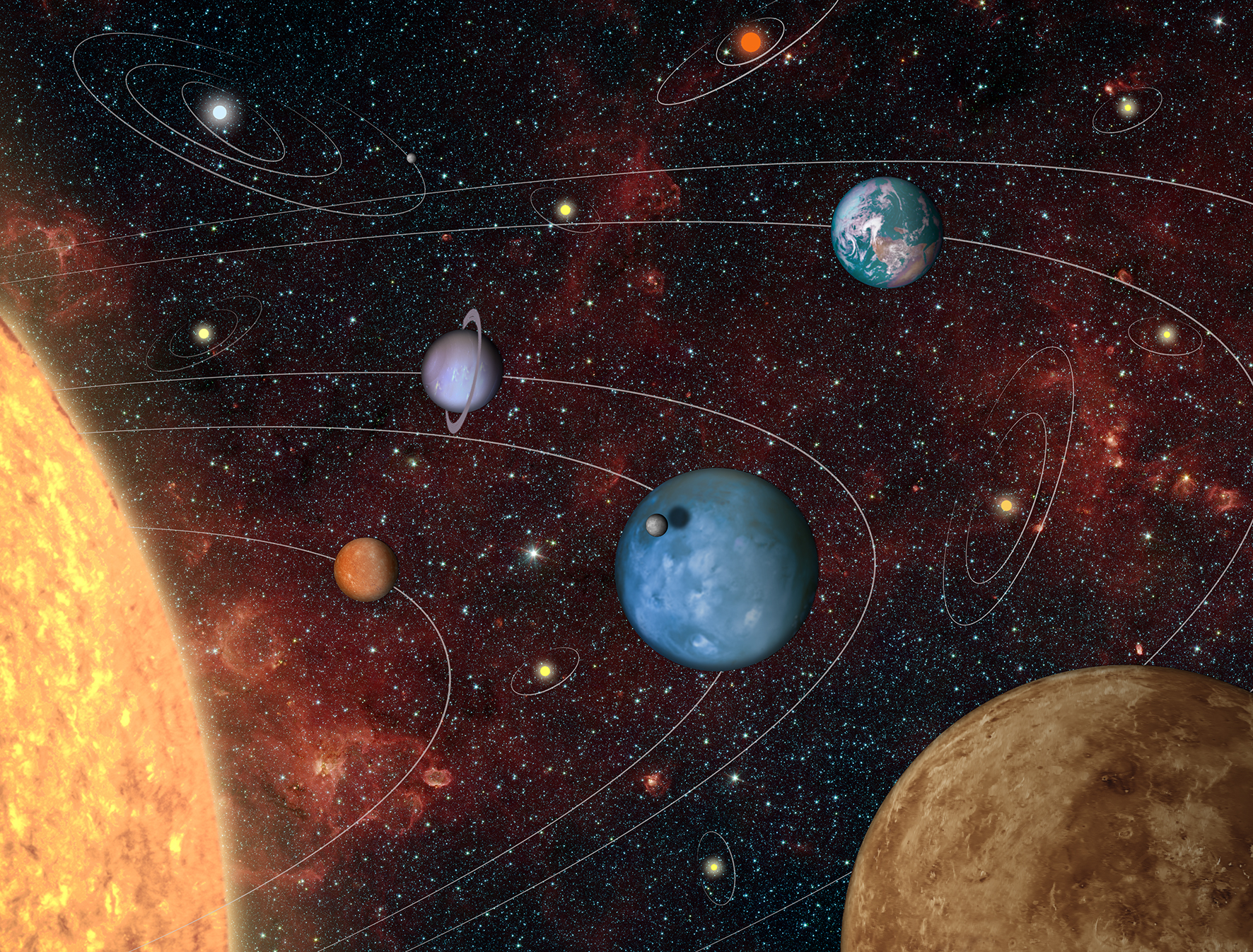PLATO will be the third medium class mission (M3) in ESA’s Cosmic Vision program. The space telescope will peer at the light of thousands of stars for several years to find tiny dips in intensity (~0.01%) which would reveal a planet passing in front. By measuring the depth of the transit and the duration between transits, scientist obtain the size of the planet and its distance from the host star. SRON will perform the cryogenic vacuum validation and characterization of 8 of the 26 cameras. PLATO is expected to be launched in 2026.

Because of the huge sample provided by PLATO (PLAnetary Transits and Oscillations of stars) and its ability to stare uninterrupted at stars for years, astronomers will be able to find also small planets with long transit periods. This enables us to find Earth-sized planets in the so-called ‘habitable zone’ around stars like the Sun.
Thanks to PLATO’s huge data sample astronomers will also be able to perform detailed statistics on the architecture of planetary systems. Since the first discovery of a exoplanets, astronomers have been mapping more and more planetary systems and found that many have a different buildup than our own Solar System.
The question is: how common (or rare) is our Solar System? The answer could hold important clues about if and where we could find life beyond our Solar System. Also, it will help putting ourideas about how planetary systems form and evolve to the test.
Science
Foremost, PLATO will provide statistical information on the architecture of planetary systems. However since it will also look at the brightest stars in the sky, these planets can be followed up from the ground to provide detailed information on the bulk density of the planets involved. This tells us if a planet is, for example, mainly rock (like the Earth), mainly gas (like Jupiter), or very icy (like Pluto). Even more detailed information about the specific makeup of the planet can be obtained from this.
The light curves provided by PLATO also provide information on the emission of thermal radiation from a planet, and the reflection of starlight by clouds in the atmosphere. The satellite will map the distribution of heat and clouds over the day- and night-side for the brightest planets to study currently highly unconstraint processes like dynamical mixing and cloud formation in exoplanet atmospheres.
Besides detecting planet transits, PLATO also provides information about the seismic activity of the host star. This ‘astroseismology’ gives us details about the host stars such as mass, radius and age. Knowing the age of the host star allows us to put the planetary statistics into an evolutionary sequence, and thereby constrain the evolution of planetary systems.
Technology
The PLATO satellite will carry 26 optical refractive telescopes, each with a diameter of 20 cm. 24 ‘normal’ telescopes will take an image every 25 seconds; 2 ‘fast’ telescopes for tracking will take an image every 2.5 seconds. Each of these telescopes will have a slightly different, but mostly overlapping, field of view. Thereby PLATO will be able to observe a large part of the sky simultaneously. Spreading the light over more telescopes is crucial to improve the signal to noise ratio, and to observe as many bright stars as possible, allowing detailed follow-up observations with ground based telescopes.
The PLATO science requires extreme stability of the telescopes, so that observed variations in the light curves are only due to planetary transitions, and not to instrumental artefacts. We need to know exactly how each of the telescopes behaves. To this end, SRON is building a space simulator to test and characterize the telescopes under simulated space conditions. This requires vacuum and cryogenic temperatures, and a light source that can mimic a distant star.
SRON will perform the cryogenic vacuum validation and characterization of 8 of the 24 ‘normal’ cameras. Two other institutes in Europe, in France and Spain, will perform these tests on the remaining telescopes.


